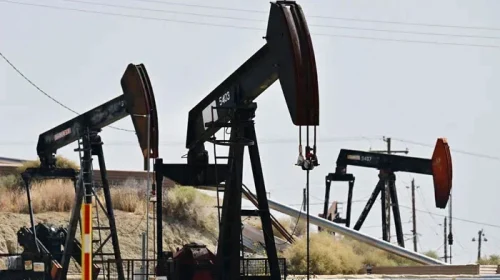How much oil does Pakistan really have? In 2013, the US Energy Information Administration (EIA) – the statistical arm of the US Department of Energy – released one of the most comprehensive assessments of global shale resources. Conducted in collaboration with Advanced Resources International (ARI), the report – titled ‘Technically Recoverable Shale Oil and Shale Gas Resources: An Assessment of 137 Shale Formations in 41 Countries Outside the United States’ – offered detailed, country-specific estimates. For Pakistan, it provided the most authoritative data yet on the nation’s untapped shale oil and gas potential.
The EIA report focuses on shale oil and shale gas resources, primarily in Pakistan’s Lower Indus Basin, including the Sembar Shale and Ranikot Formation. The EIA estimated Pakistan has 227 billion barrels of shale oil in-place of which 9.1 billion barrels is ‘technically recoverable shale oil’. This ranks Pakistan eighth globally for technically recoverable shale oil, behind Russia (75 billion barrels), the U.S. (58 billion barrels), China (32 billion barrels), Argentina (27 billion barrels), Libya (26 billion barrels), Venezuela (13 billion barrels) and Mexico.
Red alert: If fully exploited, Pakistan’s 9.1 billion barrels of technically recoverable shale oil could last about 54 years at current consumption levels.
In 2013, the EIA estimated 586 trillion cubic feet (Tcf) of shale gas in-place in the Lower Indus Basin of which 105 Tcf is ‘technically recoverable shale gas’. Red alert: Pakistan’s 105 Tcf of technically recoverable shale gas could last about 70 years at current consumption levels. Two critical terms in evaluating oil and gas resources are ‘technical recoverability’ and ‘commercial viability’. Technically recoverable resources refer to oil and gas that can be extracted using existing technology, without regard to cost or economic feasibility. In contrast, commercially viable resources are those that can be profitably extracted under current market conditions, taking into account factors such as global prices, extraction costs, infrastructure and regulatory frameworks.
First, the EIA report focuses solely on technical recoverability; it does not address commercial viability. Second, the report is now 12 years old, and oil extraction technologies – as well as economic and regulatory conditions – have evolved significantly since then, potentially altering both the feasibility and attractiveness of developing these resources.
Three urgent steps Pakistan must take to unlock its shale potential: First, establish a transparent regulatory framework. Second, secure US technology and $10 billion to $12 billion in investment through the 2025 trade deal to lower extraction costs. Third, build local capacity and expertise.
Final Assessment: Yes, the EIA’s 2013 estimates of 9.1 billion barrels of shale oil and 105 Tcf of shale gas present a transformative opportunity for Pakistan. Yes, Pakistan can achieve energy independence, potentially slashing its $17 billion annual energy import bill. The 2025 US-Pakistan trade deal, harnessing expertise from companies like ExxonMobil, Chevron and Occidental, empowers Pakistan to adopt advanced fracking technology, cutting extraction costs from $80–110 per barrel to a competitive $40–60 per barrel. Yes, Pakistan would have to foster a transparent regulatory framework. And, yes, Pakistan would have to leverage US corporate partnerships.
With bold action, Pakistan can unlock its vast shale potential within a decade, igniting a self-reliant, prosperous energy future.





